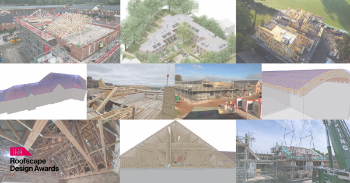Nylon in construction
Nylon is a polymer which has a molecular structure built up from a large number of similar units bonded together based on aliphatic or semi-aromatic polyamides. The first nylon was produced by DuPont in 1935.
Nylon is a thermoplastic material that can be used for a wide range of applications in the construction industry. When heated it can be moulded into a range of shapes or films, or it can be drawn into fibres. It is is used in sheets, rods, tubes, pipes, screws, washers, bolts, spacers, safety nets, plumbing fittings, and so on. Its fibres can be woven together to produce a silky and lightweight fabric that can be used in carpeting, canopies, sheets, and so on.
The advantages of nylon include its strength, durability, high pressure-bearing capacity and corrosion resistance. It also has a low coefficient of friction meaning that it can be used in applications that involve rotation or sliding with little or no lubrication.
Nylon is also waterproof and fast-drying. However, it can dissolve when exposed to chemicals such as phenols, alkalis and acids.
[edit] Related articles on Designing Buildings Wiki
Featured articles and news
Moisture, fire safety and emerging trends in living walls
How wet is your wall?
Current policy explained and newly published consultation by the UK and Welsh Governments.
British architecture 1919–39. Book review.
Conservation of listed prefabs in Moseley.
Energy industry calls for urgent reform.
Heritage staff wellbeing at work survey.
A five minute introduction.
50th Golden anniversary ECA Edmundson apprentice award
Showcasing the very best electrotechnical and engineering services for half a century.
Welsh government consults on HRBs and reg changes
Seeking feedback on a new regulatory regime and a broad range of issues.
CIOB Client Guide (2nd edition) March 2025
Free download covering statutory dutyholder roles under the Building Safety Act and much more.
AI and automation in 3D modelling and spatial design
Can almost half of design development tasks be automated?
Minister quizzed, as responsibility transfers to MHCLG and BSR publishes new building control guidance.
UK environmental regulations reform 2025
Amid wider new approaches to ensure regulators and regulation support growth.
The maintenance challenge of tenements.
BSRIA Statutory Compliance Inspection Checklist
BG80/2025 now significantly updated to include requirements related to important changes in legislation.
Shortlist for the 2025 Roofscape Design Awards
Talent and innovation showcase announcement from the trussed rafter industry.






















